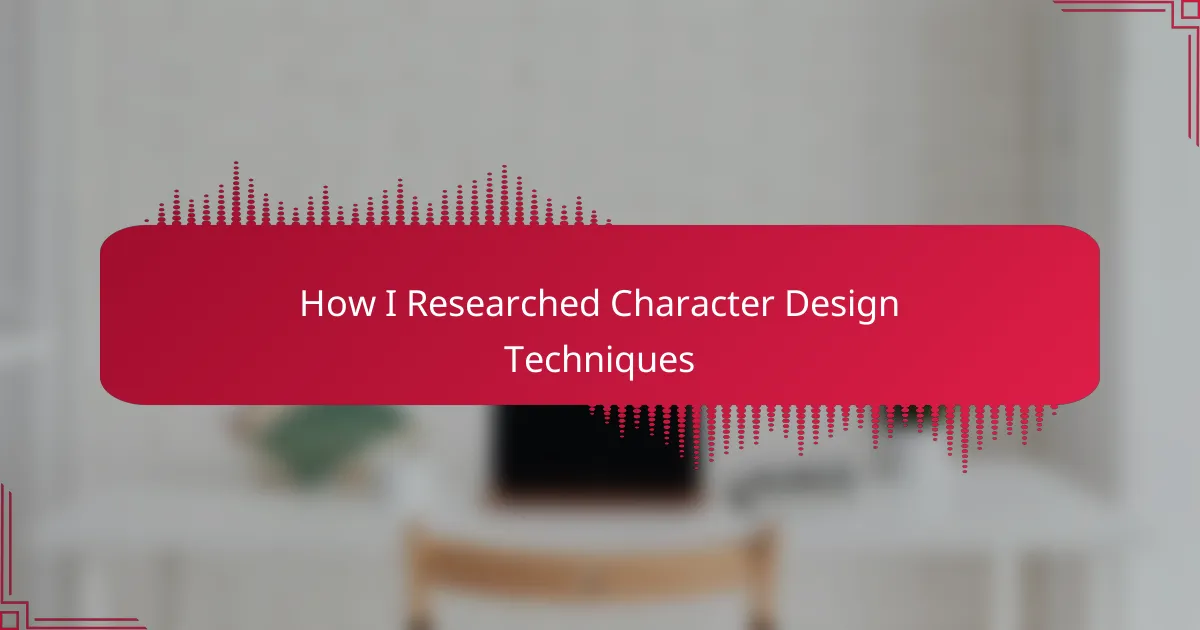Key takeaways
- Character design is essential for conveying personality, emotion, and backstory, influencing reader engagement in comics.
- Techniques like silhouette development, emotional range, and archetype blending enhance the depth and memorability of characters.
- Utilizing a variety of resources, including books, online platforms, and workshops, can significantly improve character design skills.
- Regular practice, studying established artists, and collaboration with others can lead to personal growth and innovative character development.
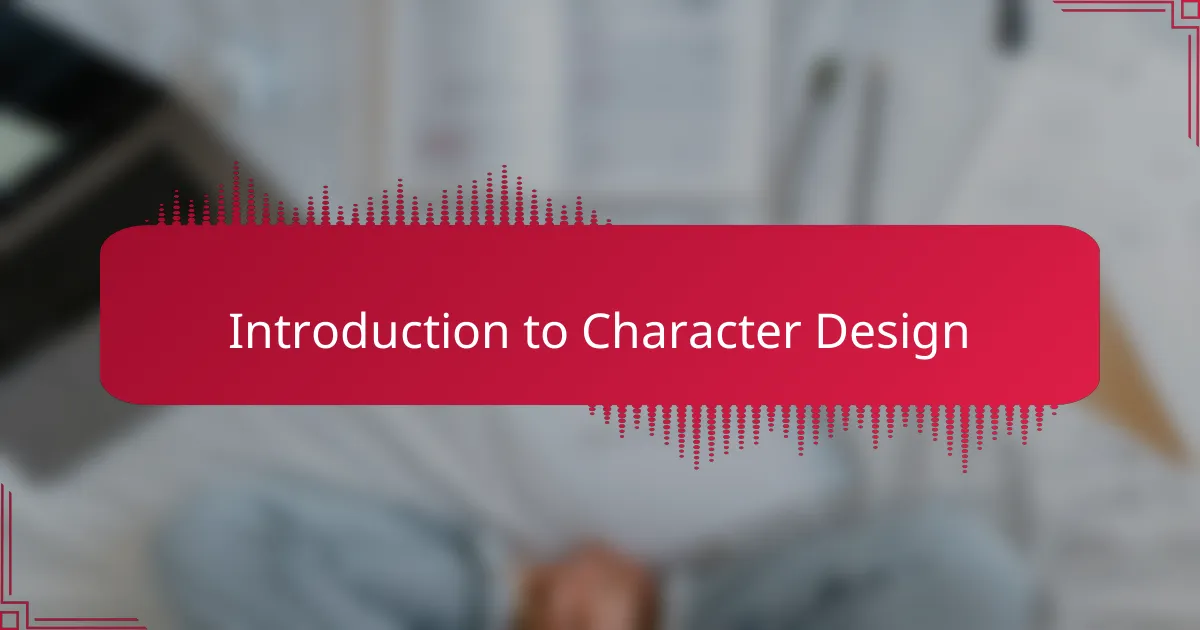
Introduction to Character Design
Character design is the visual and emotional backbone of any comic. During my journey as a comic book author, I’ve come to appreciate how a character’s appearance can convey their personality and backstory instantly. I remember sketching my first character, hoping to capture their essence through expressive features and unique outfits, and realizing how much of my own journey as a creator intertwined with this process.
When diving into character design, it’s essential to blend creativity with a study of various techniques. Here’s what I found particularly helpful during my research:
- Silhouette First: I always start with silhouettes to establish a strong foundation. It helps in visualizing the character without distractions.
- Emotional Range: Understanding your character’s emotions shapes their design; I often create mood boards to explore different emotional states.
- Consistent Style: Maintaining a cohesive art style throughout your comic ensures that characters feel like they belong in the same world.
- Cultural Influence: Incorporating cultural elements adds depth; I’ve often drawn inspiration from historical outfits or folklore.
- Color Psychology: Colors evoke emotions, and I pay close attention to how different hues can enhance my character’s personality or storyline.
- Iterative Sketching: It’s rare to get it right on the first try. I keep sketching variations until I find something that resonates emotionally with both me and the audience.
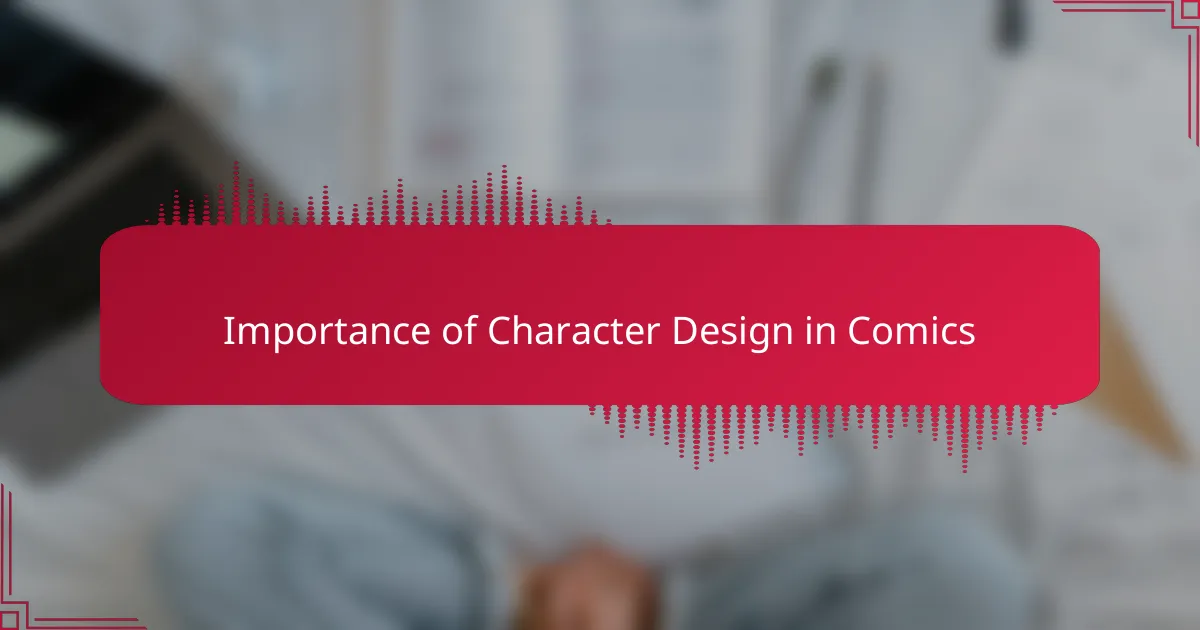
Importance of Character Design in Comics
Character design is pivotal in comics because it breathes life into the narrative. I vividly remember creating a character whose quirky clothing and wild hair instantly communicated her adventurous spirit. It’s fascinating how just a few design choices can draw readers into a character’s world and make them feel a connection almost immediately.
Moreover, a well-thought-out character design can enhance storytelling by visually representing complexities. For instance, I’ve found that a hero’s scar or a villain’s unusual attire can tell backstory elements without needing dialogue. Isn’t it remarkable how color choices alone can evoke empathy or fear? This deliberate integration of design and emotion keeps readers engaged and invested in the character’s journey.
Consistency in character design also reinforces the comic’s atmosphere. As I’ve learned through my work, if characters don’t appear cohesive, it can disrupt the reader’s immersion. Each visual detail acts like a thread, weaving them into a larger tapestry. When everything harmonizes, it solidifies the reader’s experience, drawing them deeper into the narrative’s realm.
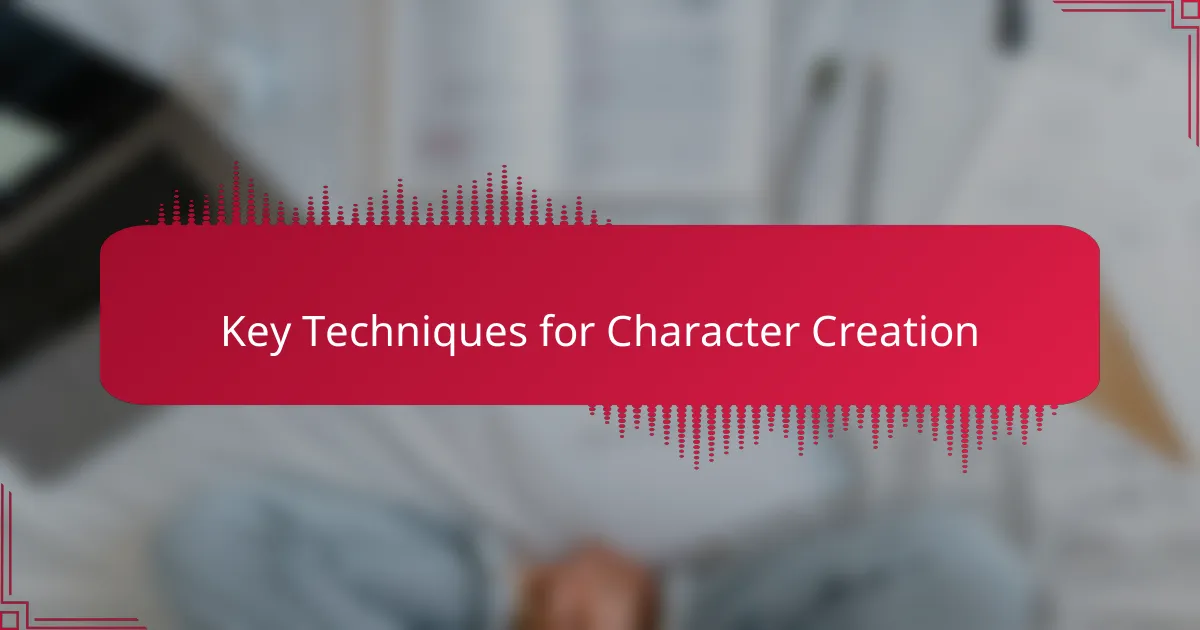
Key Techniques for Character Creation
When diving into character design, I discovered that one of the essential techniques is developing a strong backstory. Understanding where a character comes from gives depth and shapes their motivations. For instance, while creating a character for my comic, I imagined their childhood experiences and how those might influence their current behavior. It added layers to their personality and made them more relatable.
Another technique that resonated with me is the use of visual contrast. I learned that contrasting colors or styles can highlight a character’s traits and make them stand out in a scene. When I designed a quirky sidekick, I opted for vibrant colors against muted backgrounds, which brought immediate attention and aligned perfectly with their energetic nature.
Lastly, exploring different archetypes can help in crafting memorable characters. I often refer back to classic archetypes—like the mentor or the trickster—as they serve as an excellent foundation. By blending these archetypes with my original ideas, I’ve found that my characters often feel more original while still tapping into familiar narrative structures.
| Technique | Description |
|---|---|
| Backstory Development | Creating a deep background that informs a character’s behavior and decisions. |
| Visual Contrast | Using contrasting colors or styles to make characters more distinct and engaging. |
| Archetype Blending | Mixing classic character types to establish a framework for originality. |
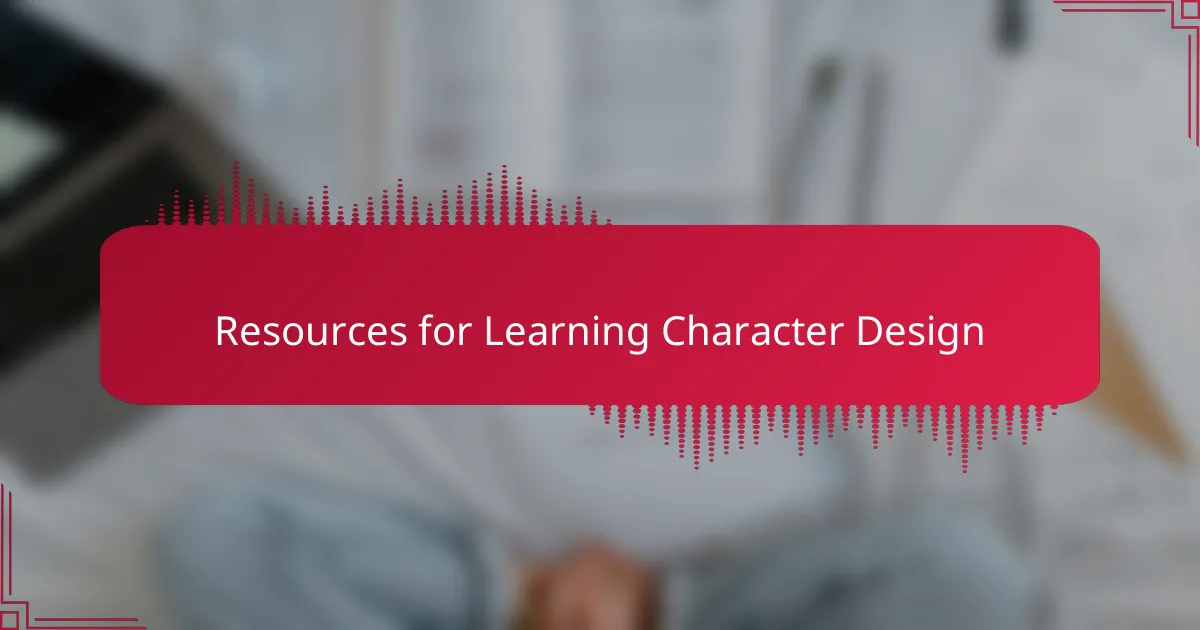
Resources for Learning Character Design
When I first started out with character design, I found a treasure trove of resources that shaped my approach. Books like “Creating Characters with Personality” by Tom Bancroft opened my eyes to the elements that bring a character to life, providing insights into both visual design and personality traits. I remember pouring over each page, jotting down notes, and feeling inspired to experiment with my own characters.
In addition to books, online platforms have been invaluable for honing my skills. Websites like DeviantArt and ArtStation feature tutorials and showcases from other artists, presenting practical examples that often sparked my creativity. Engaging with these communities not only helped me learn but also connected me with others who share the same passion.
Here’s a list of resources that have significantly enhanced my character design journey:
- Books:
- “Creating Characters with Personality” by Tom Bancroft
- “The Art of Character” by David Corbett
- Online Courses:
- Character Design Fundamentals on Skillshare
- Character Creation for Video Games on Udemy
- Websites:
- ArtStation for inspiration and tutorials
- DeviantArt for community feedback and shared techniques
- YouTube Channels:
- Proko for figure drawing and anatomy tips
- Riqi’s Art for digital character design tutorials
These resources not only provided me with knowledge but also fueled my enthusiasm, allowing me to bring my characters to life in ways I never imagined before.

My Personal Research Journey
When I embarked on my journey to research character design techniques, I found myself diving into countless resources. I remember spending hours on platforms like Pinterest and DeviantArt, where I stumbled upon some truly inspirational artwork that sparked my creativity. Each character I encountered told a story, and it was fascinating to see how different styles could evoke varying emotions.
I also attended a few workshops and online courses led by experienced artists. One workshop, in particular, emphasized the importance of silhouette in character design, which profoundly changed the way I approached my own illustrations. It was a revelation to realize how impactful a simple silhouette could be in conveying a character’s personality and role in the story.
I kept a journal to document my findings and feelings along the way. This practice not only helped me track my progress but also allowed me to reflect on how each technique resonated with me. I could see my growth as I experimented with different styles and applied the techniques I learned.
| Research Method | Insights Gained |
|---|---|
| Online Resources | Inspirational styles and emotional depth |
| Workshops | Practical applications of techniques like silhouette |
| Personal Journaling | Tracking growth and emotional reflections |
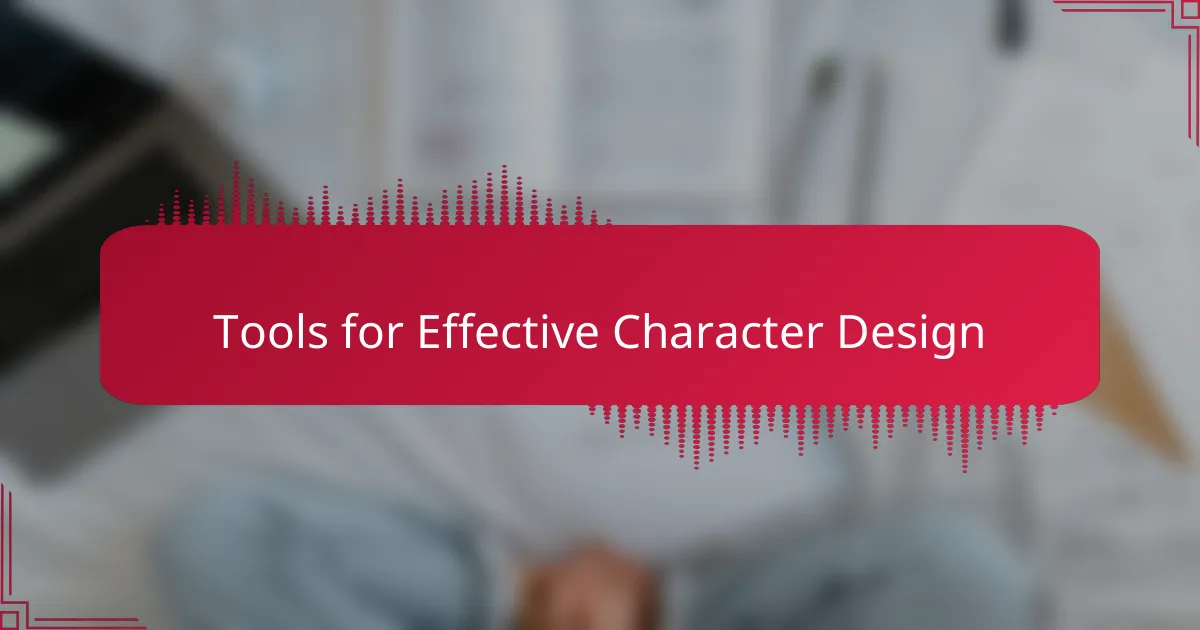
Tools for Effective Character Design
When diving into character design, I found that tools can make all the difference. Software like Adobe Photoshop and Clip Studio Paint offers advanced features that can help bring your vision to life. I remember the first time I used a digital brush to create fine details; it felt like magic as my characters took shape with every stroke!
Another great tool is Procreate, especially for beginners or those who prefer working on an iPad. Its intuitive interface and easy accessibility allow for quick sketches and iterations. I often find myself doodling characters during downtime, and Procreate has truly helped streamline that creative process.
And let’s not overlook the importance of traditional methods, like sketchbooks and pencils. There’s something deeply rewarding about the tactile experience of drawing on paper. I always encourage emerging artists to keep a sketchbook handy; it can fuel creativity in unexpected ways.
| Tool | Features |
|---|---|
| Adobe Photoshop | Advanced editing, brushes, and layer techniques. |
| Clip Studio Paint | Specialized for comics, with excellent inking tools. |
| Procreate | User-friendly, perfect for on-the-go sketching. |
| Traditional Sketchbooks | Allows for freehand creativity and instant idea capture. |
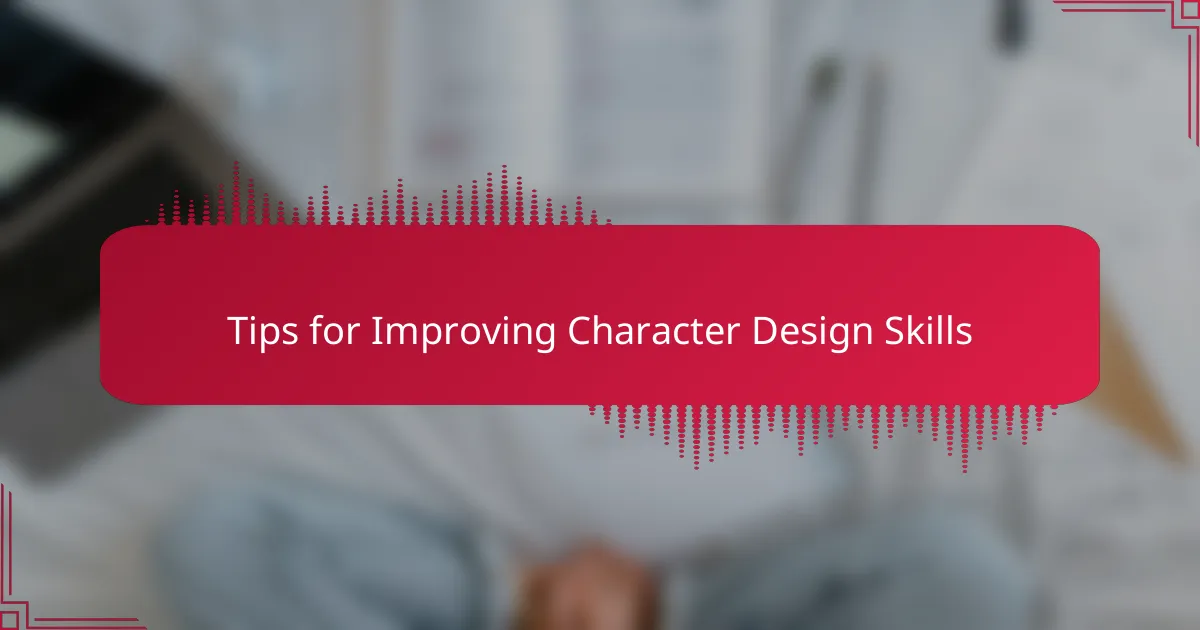
Tips for Improving Character Design Skills
One way I improved my character design skills was by studying the works of established artists. I spent time analyzing how they conveyed personality through physical traits and expressions. It’s fascinating to see how a simple change in posture can completely alter the perception of a character.
Practice is crucial in character design. I dedicated time to sketching characters from different angles and in various situations. This not only improved my understanding of anatomy but also helped me develop a unique style that feels personal and authentic.
Collaboration is another powerful tool. Working with writers or other artists allowed me to see my characters through a different lens. Sharing ideas and receiving constructive feedback made a significant difference in my character development process.
| Technique | Description |
|---|---|
| Study Established Artists | Analyze the work of skilled artists to understand their techniques and styles. |
| Regular Practice | Dedicate time for sketching and experimenting with character designs to develop your skills. |
| Collaborate with Others | Engage with writers and other artists for feedback and fresh perspectives on your designs. |
